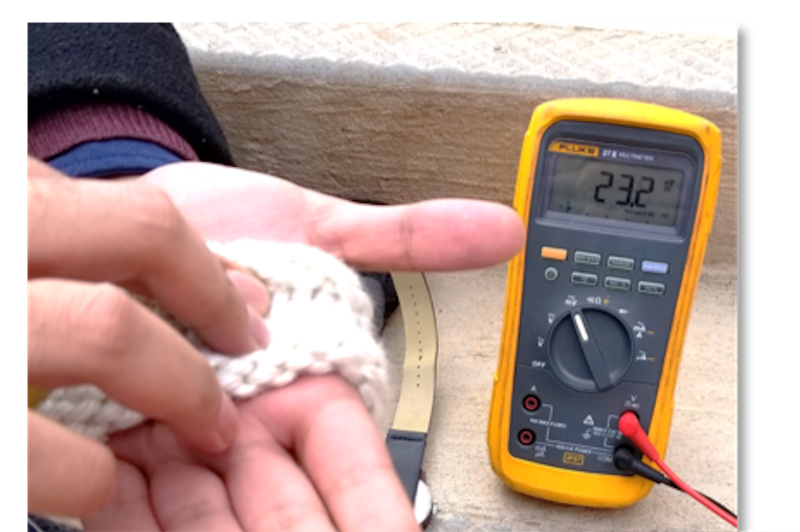Scientists from the University of Massachusetts have developed a low-cost fabric that can harvest body heat to power wearables such as fitness trackers.
Read more New Wearable Device Harvests Energy from Low-frequency Vibrations
Writing in an early online edition of Advanced Materials Technologies, materials chemist Trisha Andrew and her Ph.D. student Linden Allison explain that in theory, body heat can produce power by taking advantage of the difference between body temperature and ambient cooler air, a “thermoelectric” effect. Materials with high electrical conductivity and low thermal conductivity can move electrical charge from a warm region toward a cooler one in this way, reports UMass.
Using Body Heat as a Source of Energy
Studies have identified the heat from a human body as a possible source of power for wearables. However, the materials needed at present are either very expensive, toxic or inefficient. “What we have developed is a way to inexpensively vapor-print biocompatible, flexible and lightweight polymer films made of everyday, abundant materials onto cotton fabrics that have high enough thermoelectric properties to yield fairly high thermal voltage, enough to power a small device,” says Andrew.

The two researchers took advantage of the naturally low heat transport properties of wool and cotton to create thermoelectric garments that can maintain a temperature gradient across an electronic device known as a thermopile, which converts heat to electrical energy even over long periods of continuous wear. This is a practical consideration to ensure that the conductive material is going to be electrically, mechanically and thermally stable over time, Andrew notes.
“Essentially, we capitalized on the basic insulating property of fabrics to solve a long-standing problem in the device community,” they summarize. “We believe this work will be interesting to device engineers who seek to explore new energy sources for wearable electronics and designers interested in creating smart garments,”
Sweat Increases Thermovoltage of the Fabric
The thermovoltage output of the armband was significantly increased by sweat, which was not surprising, as damp cotton is known to be a better heat conductor than dry fabrics. They were able to turn off heat transfer at will by inserting a heat-reflective plastic layer between the wearer’s skin and the band, as well.
Read more Matrix PowerWatch 2 Uses Solar and Body Heat to Power Heart Rate Monitor, GPS Now at CES 2019
Overall, the researchers say, “We show that the reactive vapor coating process creates mechanically-rugged fabric thermopiles,” with “notably-high thermoelectric power factors” at low temperature differentials compared to traditionally produced devices. “Further, we describe best practices for naturally integrating thermopiles into garments, which allow for significant temperature gradients to be maintained across the thermopile despite continuous wear.”












